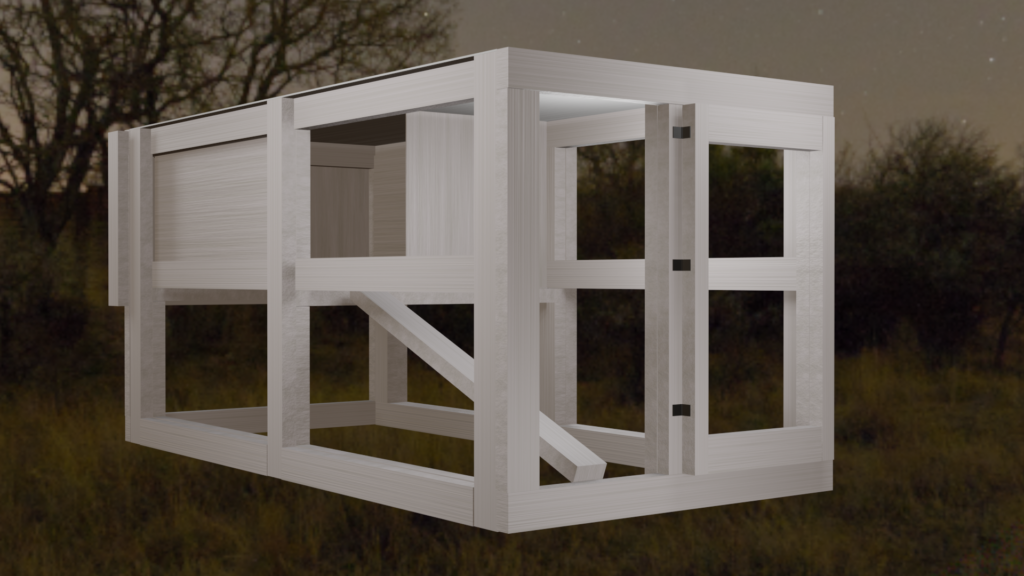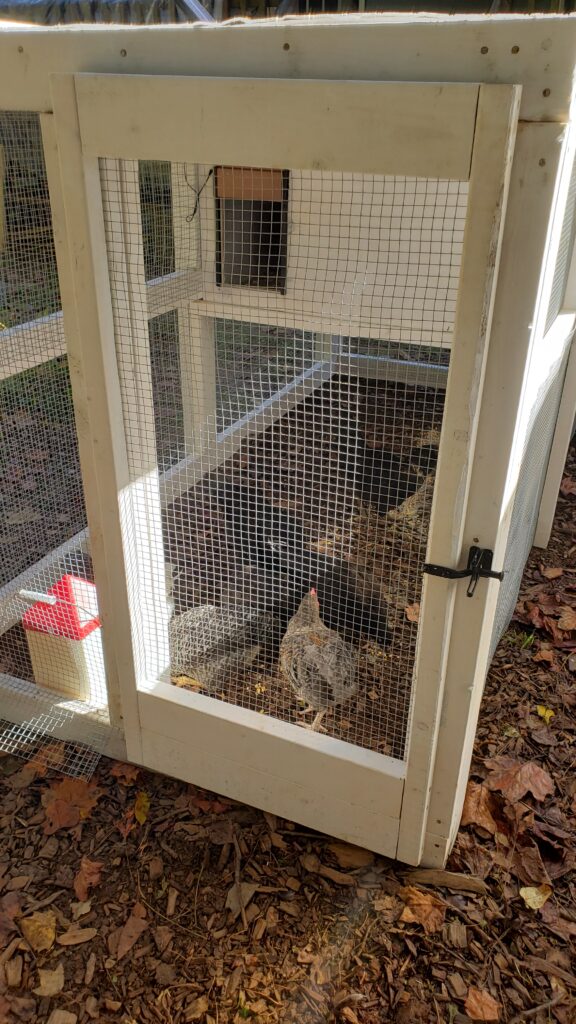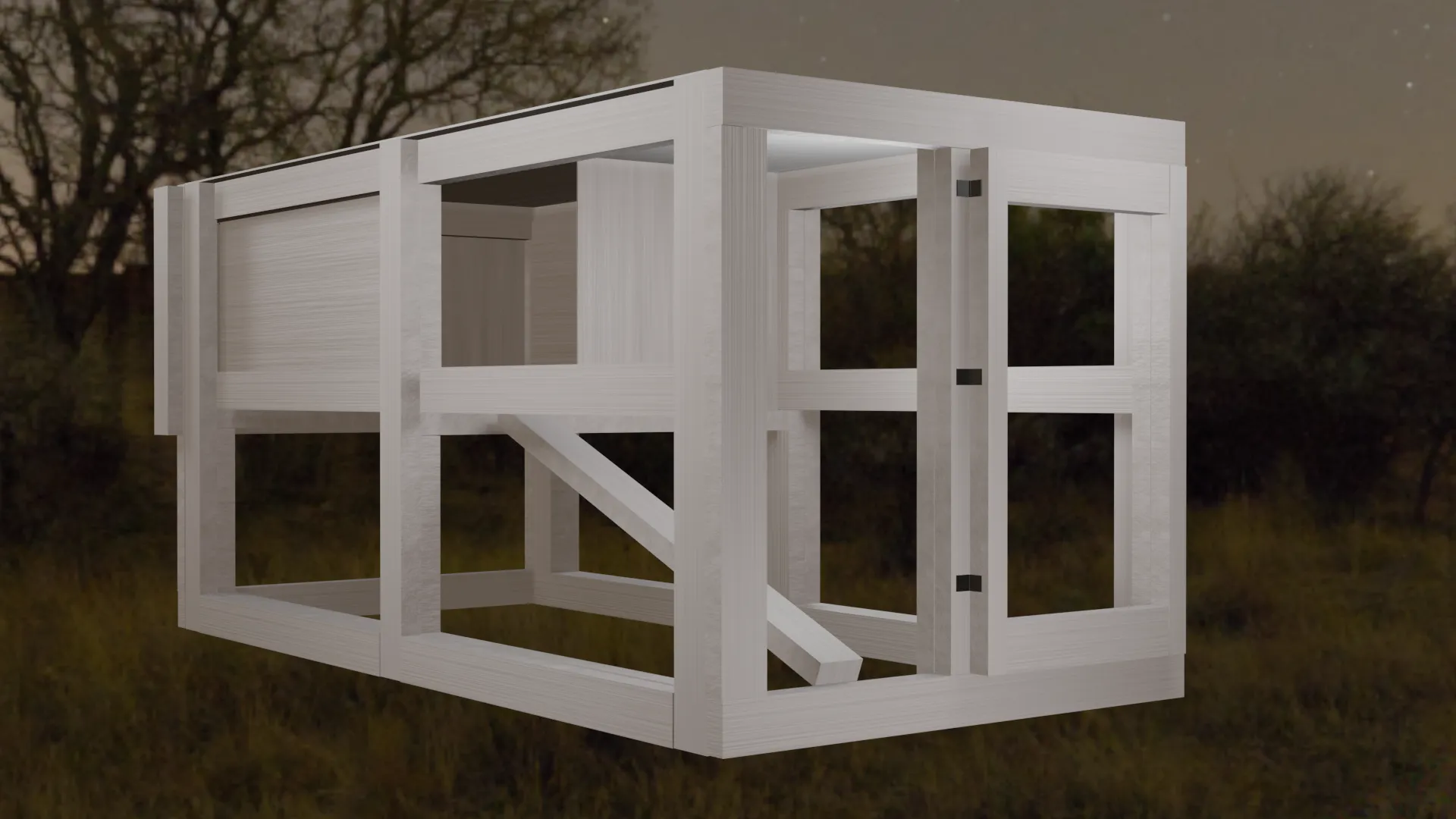It’s time for our youngest chickens to move out of their cramped cage and get to work out in the field. I decided to build a Chicken Tractor. Follow along with me in this post to learn how it all came together!

Vision: 3d Model
Because wood ain’t cheap nowadays I decided to hash out some plans in a popular free modelling software called Blender. I was able to set the actual lengths of the lumber to what was available at the store, and came up with 5 different iterations of my design. I ended up with an 8ft x 4ft x 4ft design with a sliding egg door and latched run door. This is what I considered to be the best bang for my buck in terms of lumber.
Parts List
| Item | Qty | Price Per |
|---|---|---|
| 2x4x8 | 27 | $4 |
| 4x4x8 Paneling | 3 | $22 |
| 2x2x8 Furring Strip | 3 | $2 |
| 1/4 Inch Hardware Cloth | 1 | $50 |
| Outdoor Primer | 1 gal | $20 |
| Outdoor Paint | 1 gal | $20 |
| Nails | Big Box | $25 |
| Hinges (2 pack) | 1 | $5 |
| Latch | 1 | $7 |
| Clasp | 1 | $5 |
Getting Started
This post is not meant to be an all inclusive guide, but I will give a rundown on the steps that I took to build this Chicken Tractor.
First and Foremost, paint all the boards! Paint the boards with primer now and they will last a lot longer in the weather. This is an easy way to protect your investment!
(timelapse)
I tacked the base of the frame with two nails per joint. in the future when it’s time to add the hardware cloth, I actually took the first parts of the frame off so I could sandwich the cloth underneath it. It worked well!



Tips
~ It’s a tough project, so take your time. I took over a month to finish mine!
~ Create a drawing or something to reference before measuring lengths to cut. I used my 3d Model file, and would select boards and hide them when I added them.
~ Overestimate the wood by a few 2×4’s. They are useful to have around and it’s not the end of the world when you make a bad cut.
~ We got a solar powered automatic coop door with a remote, so we can look out our kitchen window and see if we need to manually open or close the door!
Final Chicken Tractor

This project was pretty big and involved a lot of planning. Creating the model in Blender first really made it easier to actually build without wasting material. Some final notes I’d like to mention







